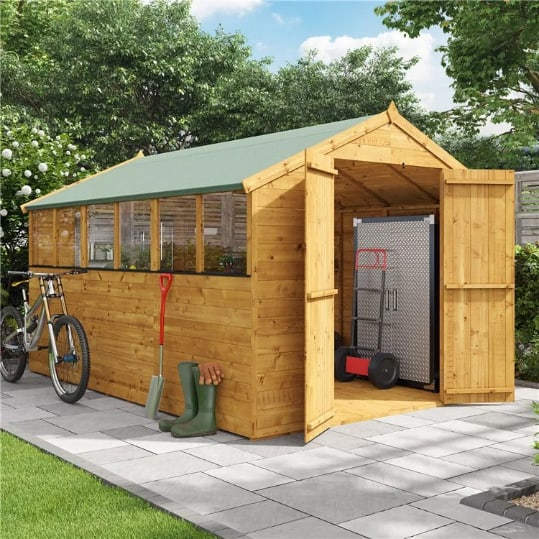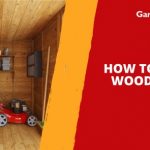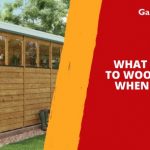Jump to:
Wood is favoured by its strength-to-weight ratio, which is better than most types of steel. Because of this, it’s a commonly used material for garden buildings, including sheds. In this blog, we’re about to find out how long a wooden shed can last. We’ll also explore the factors influencing its longevity; read on for answers!
What’s the Average Lifespan of Wooden Sheds?

Good-quality wooden sheds can last 10 to 25 years with proper upkeep. Keep in mind, though, that the shed’s overall construction and manufacturer guarantees also play a role in this. Garden Buildings Direct, for instance, offers a 10-year anti-rot guarantee for untreated units and 15 years for pressure treated sheds and more.
With pressure treatments and regular maintenance, they can last even longer. You’ll still need to do your bit to help your wooden shed stand the test of time.
Wooden Shed’s Design and Construction
A well-planned design and robust construction contribute to the shed’s durability and longevity. This includes special features added during the build, such as:
Pressure treatment
Sheds made with pressure-treated timber are built to last. Pressure treatment is a high-pressure process that infuses the wood with chemical preservatives. This makes the timber resistant to insect damage, moisture, and rot.
Since pressure-treating is quite a complex process, manufacturers usually handle it themselves. It’s offered as a standard or as an upgrade, meaning the timber is treated before the shed is delivered. While this adds to the upfront cost, it can save you a lot in the long run by reducing repair and maintenance expenses.
Tongue and groove cladding
Tongue and groove cladding, or T&G, is a special wooden board used in building wooden structures. These panels slot together like a puzzle, creating a protective outer layer for the shed. This design improves insulation, weather resistance, and appearance.
T&G construction also prevents water from seeping into the wood or structure’s interior. This water-resistant feature helps minimise the risk of rot, further enhancing the wooden shed’s durability. On top of that, tongue and groove sheds have a classic, clean look—perfect for those after a contemporary design.
Ventilation
Sheds designed with ventilation and drainage in mind help tackle moisture-related issues. Proper airflow prevents condensation and reduces the risk of rot and mould growth. Such concerns are common in timber due to its hygroscopic properties.
That’s why manufacturers include built-in vents or louvre-style panels to enhance air circulation inside the shed. Some sheds also come with windows, either as standard or as an optional extra.
Roofing and drainage
The roof plays an important role, too. Roofs with an overhang help protect the walls from rainwater runoff, while a pitched design can reduce the risk of leaks and dampness.
Gutters and downpipes also help divert rainwater away from the shed’s walls and foundation, keeping the timber drier. These features may come as standard or can be added later.
Regular Maintenance

No matter how good quality your wooden shed is or how packed with promising features, if neglected, it might not last as promised. Make a habit of including these upkeep tasks whenever possible:
- Check the exterior regularly for signs of wear, cracks, or damage. Replace any rotten wood that can’t be saved.
- Tighten any loose screws or nails in the structure, especially after a heavy rain or strong wind.
- Check the base for any shifting or settling issues. If it needs rebuilding, consider a concrete slab and refer to this guide for steps: How to Make a Concrete Slab Base for Your Shed
- Repaint or reseal (using a silicone caulk gun) every few years to protect against the weather.
- Keep the shed tidy by clearing debris, leaves, and dirt from the roof, gutters, and corners.
Round-up
Wood, although a rigid material, can be vulnerable when left as is—bare, untreated, and unprotected. Hence, many wooden sheds include these designs and upgrades for year-round dependability. And if you spot common issues like rot, pests, or water damage, deal with them straight away. Paired with regular care, this will help your wooden shed hold up better than you might expect!
Up next on your reading list: What Happens to Wooden Sheds When It’s Hot?










